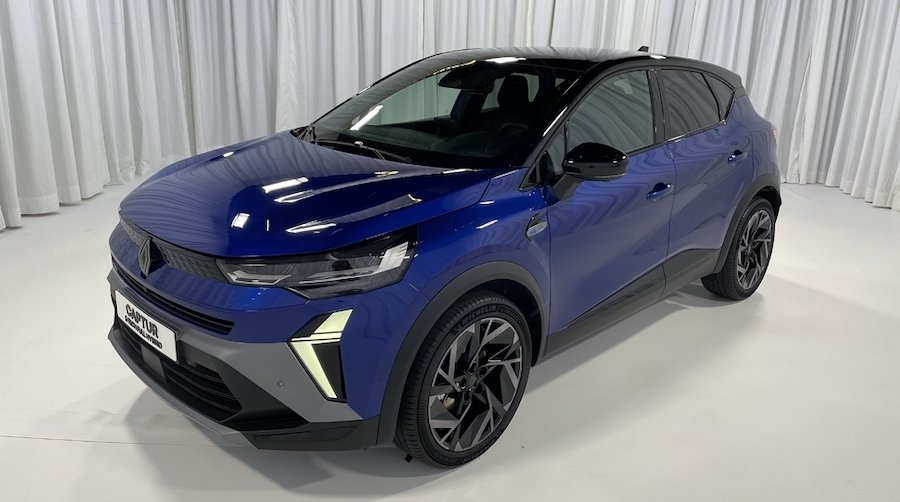The New Renault Captur Gets Esprit Alpine Trim, Loses Leather

Renault gave the Clio supermini a mid-cycle facelift about a year ago, so it's only natural its crossover equivalent is receiving a nip and tuck as well. The 2024 Captur follows the latest design language with striking LED daytime running lights and the restyled diamond logo. The entire front fascia has been redesigned, which doesn't happen very often during a vehicle's shelf life.
There are fewer changes at the rear where the taillights have retained their "C" shape but now have different graphics. Renault updated its badge on the tailgate to fit the latest corporate identity, and it looks as though the fake exhaust tips are now (thankfully) a thing of the past. Hopefully, it’s a sign this annoying trend is beginning to die off.
A new Esprit Alpine trim replaces the old RS Line at the top of the lineup. Customers will get to pick from no fewer than 14 two-tone paint combinations and just as many colors. The cheapest 2024 Captur rides on 17-inch steel wheels but you can optionally upgrade to alloys of the same size, or go as high as 19 inches for the Esprit Alpine.
The interior looks instantly familiar (it's just a facelift after all) but the infotainment's touchscreen now measures 10.4 inches while the largest digital instrument cluster has a diagonal of 10.25 inches. With the 2024 Captur, Renault is removing all the leather from the subcompact crossover’s interior, and it's also getting rid of the chrome. The new upholstery is made from recycled materials based on renewable materials like hemp.
Stick to the entry-level version and the French marque will install a tiny three-cylinder 1.0-liter turbocharged gasoline engine with 90 hp delivered to the road via a six-speed manual gearbox. The larger four-cylinder 1.3-liter turbo unit is good for 140 hp and works with the same manual transmission. A more potent version of the 1.3-liter engine is rated at 160 hp and channels power to the wheels via a dual-clutch, seven-speed automatic transmission.
Alternatively, you can opt for the hybrid powertrain with a naturally aspirated 1.6-liter gasoline engine producing 94 hp and working together with a 36-kilowatt electric motor, an 18-kW high-voltage starter generator, and a 1.2-kWh battery. It has a combined output of 145 hp and always starts in purely electric mode. Renault claims that 80 percent of city driving is done without using the combustion engine.
Predictably, there's no diesel engine as automakers active in Europe are gradually moving away from putting oil-burners in their smallest cars. However, there is an LPG (liquefied petroleum gas) version with a three-cylinder 1.0-liter turbo engine and a six-speed manual gearbox. With the gasoline and LPG tanks full, this Captur with 100 hp on tap can cover 684 miles.
A rival for the Ford Puma, the new-ish Renault Captur goes on sale in Europe later this year once series production commences in Spain at the Valladolid factory.
